Journey-man’s Journal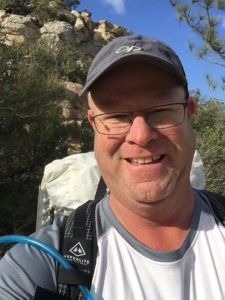
One of the many pleasures of hiking amongst the Black Hills in Mt. Diablo’s eastern range is exploring the numerous Native American bedrock mortar sites. For thousands of years the Black Hills were home to the Volvon tribelet of the Bay Miwok Native American people who lived and enjoyed the abundant natural resources of the region until Spanish-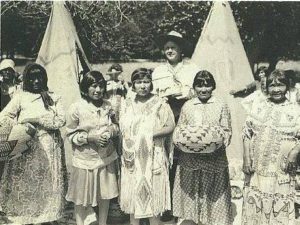 American Franciscans extirpated them from their homeland 200 years ago. Today the Black Hills’ oak woodland/savannah landscape is virtually untouched by modern development and includes a series of hiking trails stitching together Morgan Territory Regional Preserve to the east and the sacred peak of Mt. Diablo to the west.
American Franciscans extirpated them from their homeland 200 years ago. Today the Black Hills’ oak woodland/savannah landscape is virtually untouched by modern development and includes a series of hiking trails stitching together Morgan Territory Regional Preserve to the east and the sacred peak of Mt. Diablo to the west.
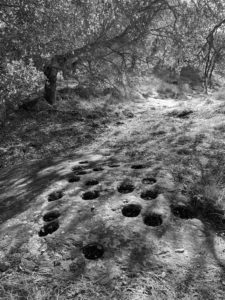 Hundreds of bedrock mortars can be found trailside. Bedrock mortars, or circular depressions inscribed into natural rock outcroppings, were once used to crush, grind, or tenderize food ingredients, such as nuts, meat, and fish, into fine pastes and powders for cooking. One mortar site in particular, Riggs Canyon Rock Camp, contains 113 bedrock mortars and is easily accessed and is a perfect place to stop for lunch and contemplate the daily life of a time long gone.
Hundreds of bedrock mortars can be found trailside. Bedrock mortars, or circular depressions inscribed into natural rock outcroppings, were once used to crush, grind, or tenderize food ingredients, such as nuts, meat, and fish, into fine pastes and powders for cooking. One mortar site in particular, Riggs Canyon Rock Camp, contains 113 bedrock mortars and is easily accessed and is a perfect place to stop for lunch and contemplate the daily life of a time long gone.
The Riggs Canyon Rock Camp mortar site is typically accessed via Finley Road from San Ramon on the south side, but a more enjoyable and secluded five-mile loop hike is from the north off the winding one-lane Morgan Territory Road trailhead. To reach the non-descript trailhead, exit Marsh Creek Road and precede on Morgan Territory Road for 4.6 miles (about a half-mile pass the two one-lane bridges). The trailhead will be on your right and parking is limited to the road shoulder. Bring your own trail map and extra water as there are no services at this remote trailhead. Allow for about three hours for completing the five-mile loop trail.
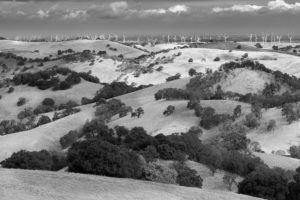 Prep yourself for an initially steep hike up the Morgan Creek Trail to Jeremiah Creek Trail and continue your climb to Old Finley Road/Highland Ridge Road crossing. If attempting during the raining season like I did the weekend after Thanksgiving, be prepared for sticky clay mud that will cling to you shoes like the weight of bricks. Oh, the joy of winter hiking! To overcome this, try walking on the edge of the trail on dead leaves and grasses. Once reaching the crest, observe the incredible views towards the Delta and follow Highland Ridge Road south, but do not descend down Old Finley Road as this will be your return route. Continue on Highland Ridge Road for about 0.8 miles to Crestview Road. Descend Crestview Road to the single-track Amphitheater Trail and meander about another half mile until you reach the large group of rock outcroppings. You have arrived at Riggs Canyon Rock Camp mortars!
Prep yourself for an initially steep hike up the Morgan Creek Trail to Jeremiah Creek Trail and continue your climb to Old Finley Road/Highland Ridge Road crossing. If attempting during the raining season like I did the weekend after Thanksgiving, be prepared for sticky clay mud that will cling to you shoes like the weight of bricks. Oh, the joy of winter hiking! To overcome this, try walking on the edge of the trail on dead leaves and grasses. Once reaching the crest, observe the incredible views towards the Delta and follow Highland Ridge Road south, but do not descend down Old Finley Road as this will be your return route. Continue on Highland Ridge Road for about 0.8 miles to Crestview Road. Descend Crestview Road to the single-track Amphitheater Trail and meander about another half mile until you reach the large group of rock outcroppings. You have arrived at Riggs Canyon Rock Camp mortars!
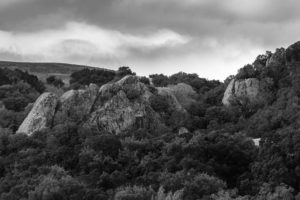 Explore the sunny rock outcropping to your left and notice the 40 plus bedrock mortars speckled about the surface. Choose a spot on the rock to lie down and imagine what life was like just a couple of hundred years ago as this is where Native Americans prepared their food. This site is certainly a window into the past, an amazing place to experience firsthand the many bedrock mortars used by the Volvons for thousands of years. Pondering the prehistory of the Black Hills on the return hike, head onward along the Amphitheater Trail to Old Finley Road. Once at Old Finley Road turn right and trek up Old Finley fire road back to the ridgeline. Once to the top, veer left to the Jeremiah Creek Trail you climbed earlier and descend back to Morgan Creek Trail fire road down to your car for the return drive home with a new appreciation of our local Bay Area foothills.
Explore the sunny rock outcropping to your left and notice the 40 plus bedrock mortars speckled about the surface. Choose a spot on the rock to lie down and imagine what life was like just a couple of hundred years ago as this is where Native Americans prepared their food. This site is certainly a window into the past, an amazing place to experience firsthand the many bedrock mortars used by the Volvons for thousands of years. Pondering the prehistory of the Black Hills on the return hike, head onward along the Amphitheater Trail to Old Finley Road. Once at Old Finley Road turn right and trek up Old Finley fire road back to the ridgeline. Once to the top, veer left to the Jeremiah Creek Trail you climbed earlier and descend back to Morgan Creek Trail fire road down to your car for the return drive home with a new appreciation of our local Bay Area foothills.

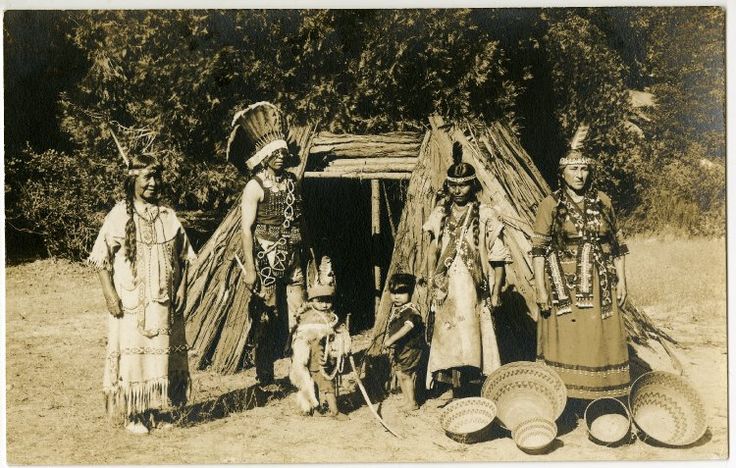
Great article. So nice to see these wonderful hikes just outside our back door. Thank you!